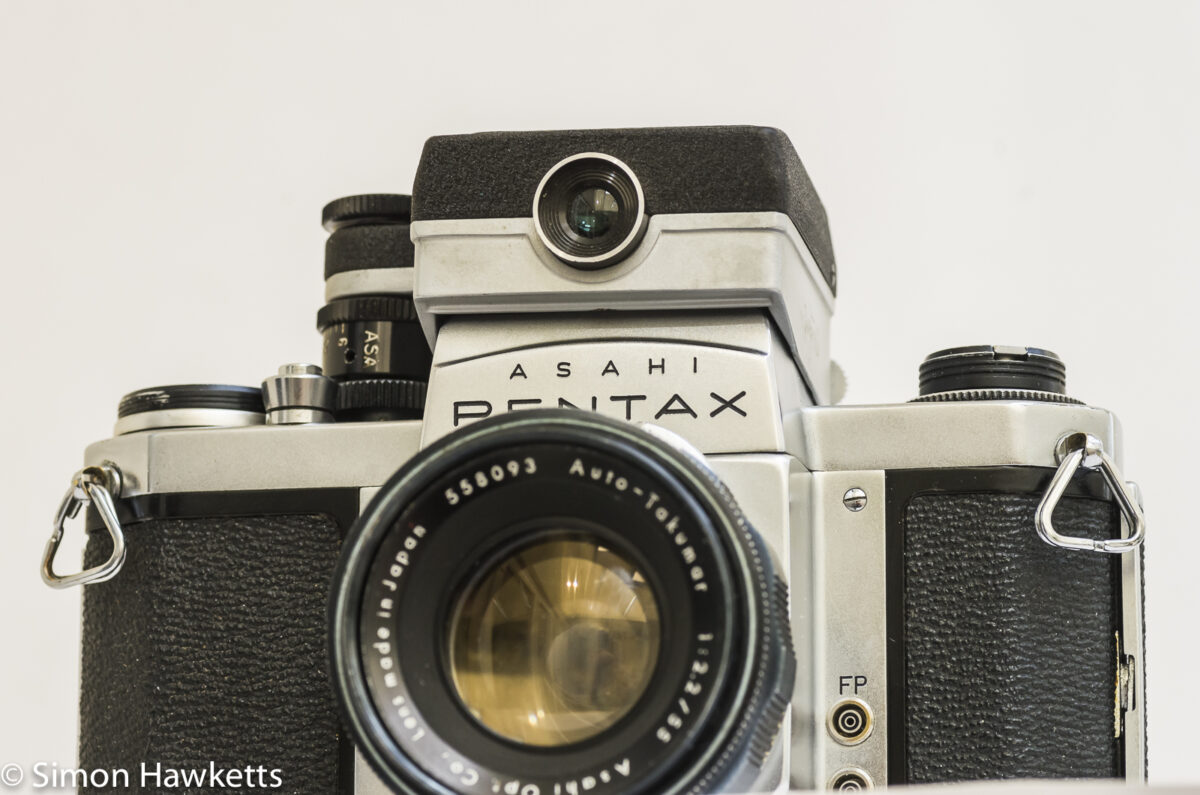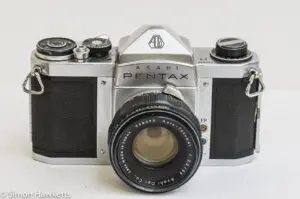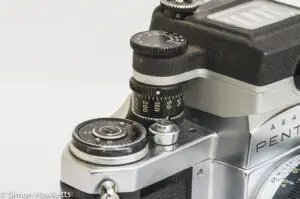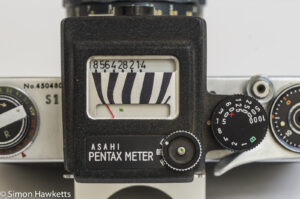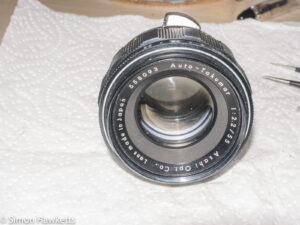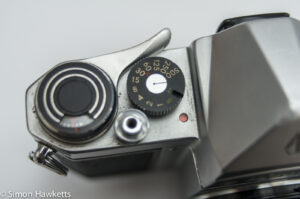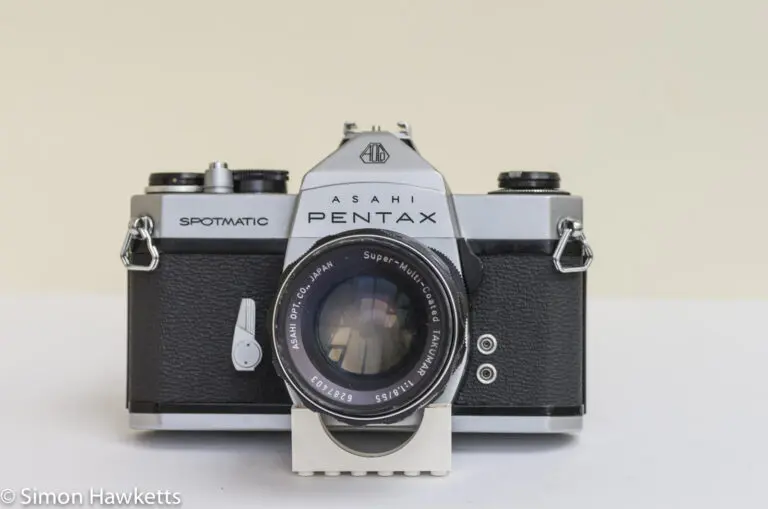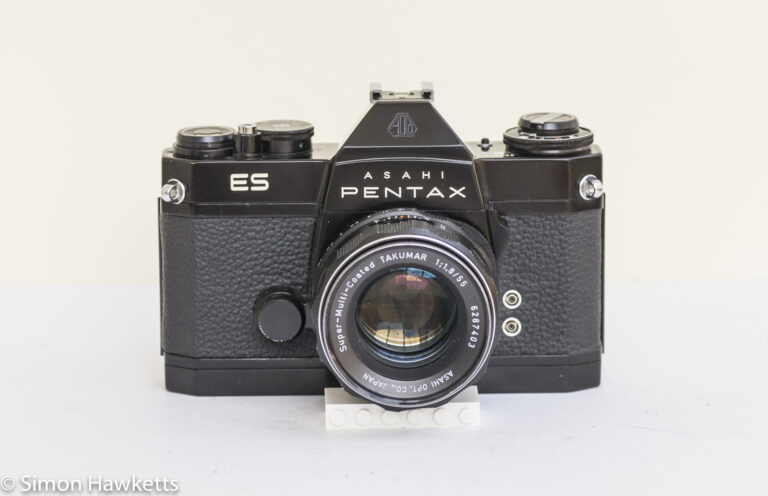Pentax S1 35 mm SLR review
This is a review of the Pentax S1 35 mm SLR, which was one of the last cameras Pentax made before they launched their iconic Spotmatic series. This camera also has the optional clip on exposure meter made for the S series cameras, and I’ve included that in the review.
Images of the Pentax S1
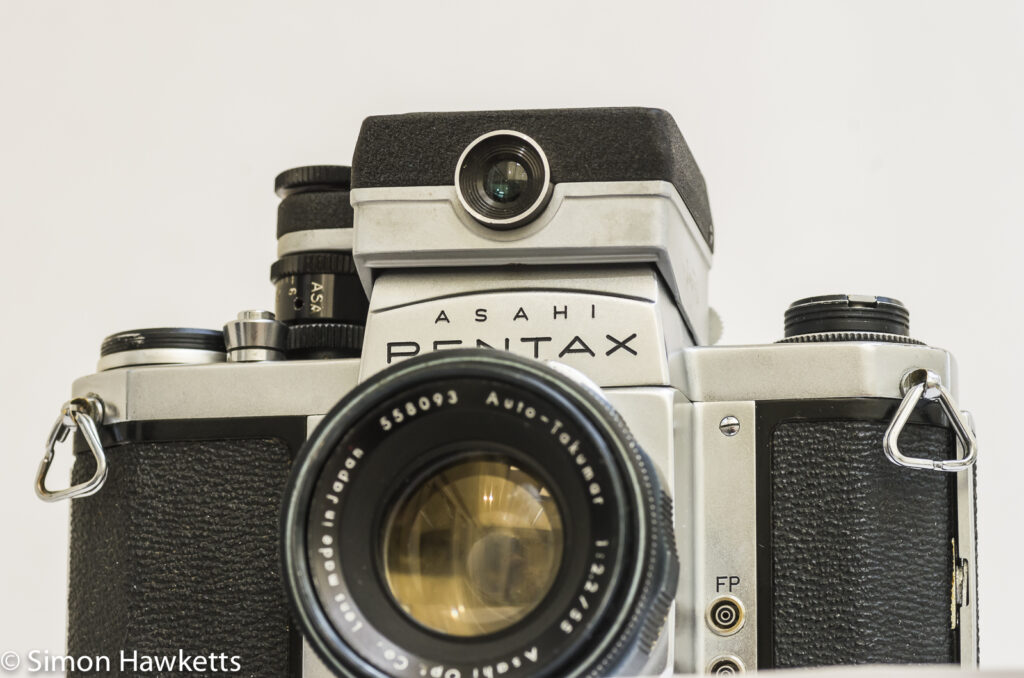
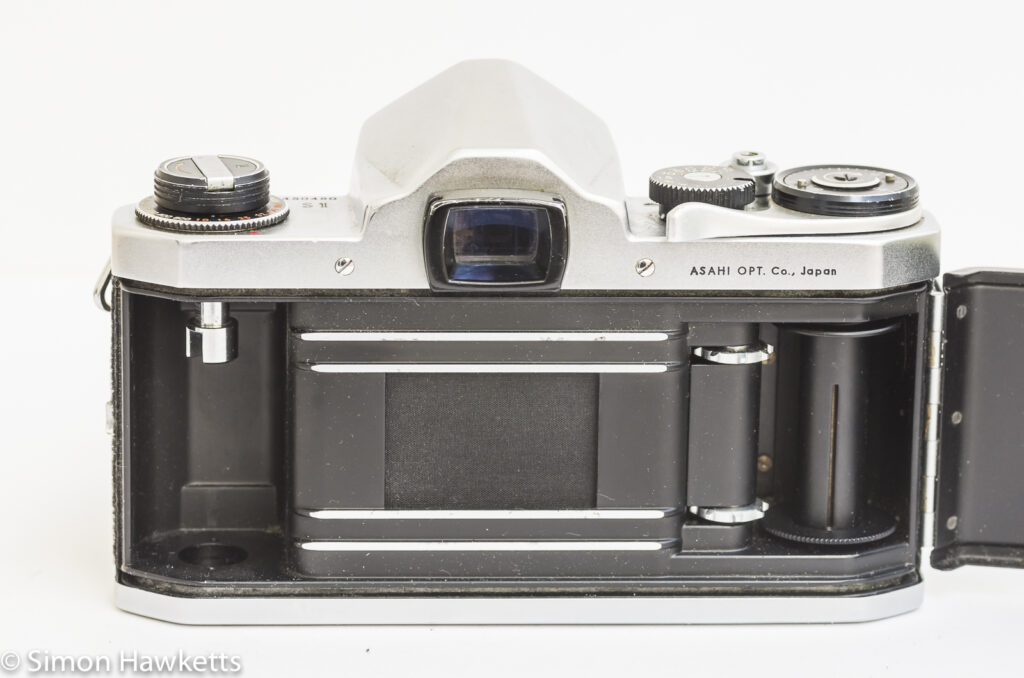
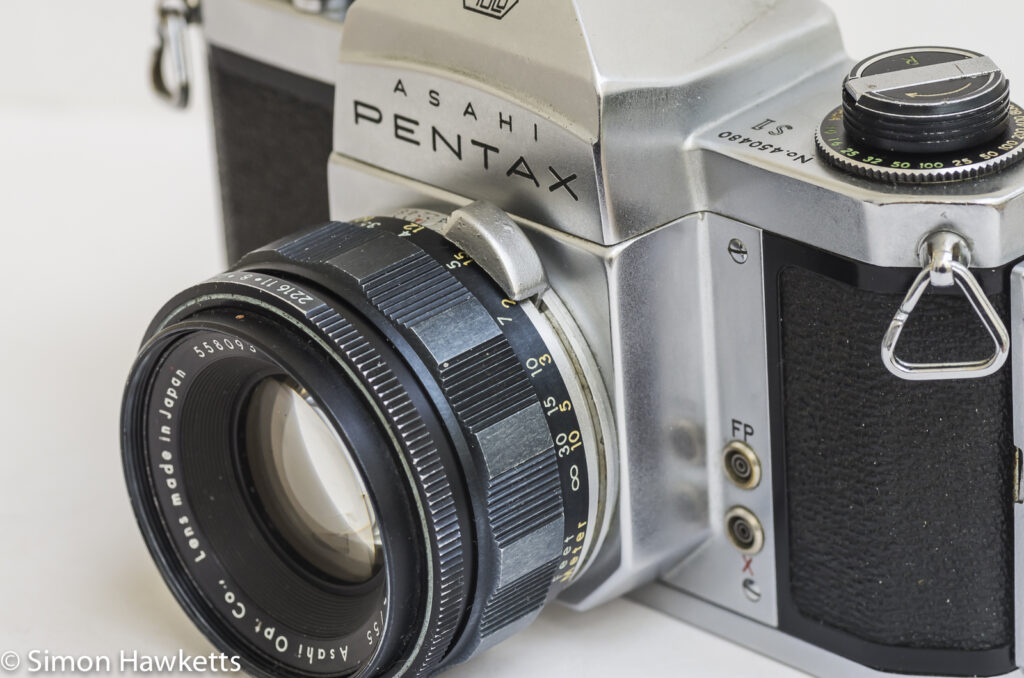
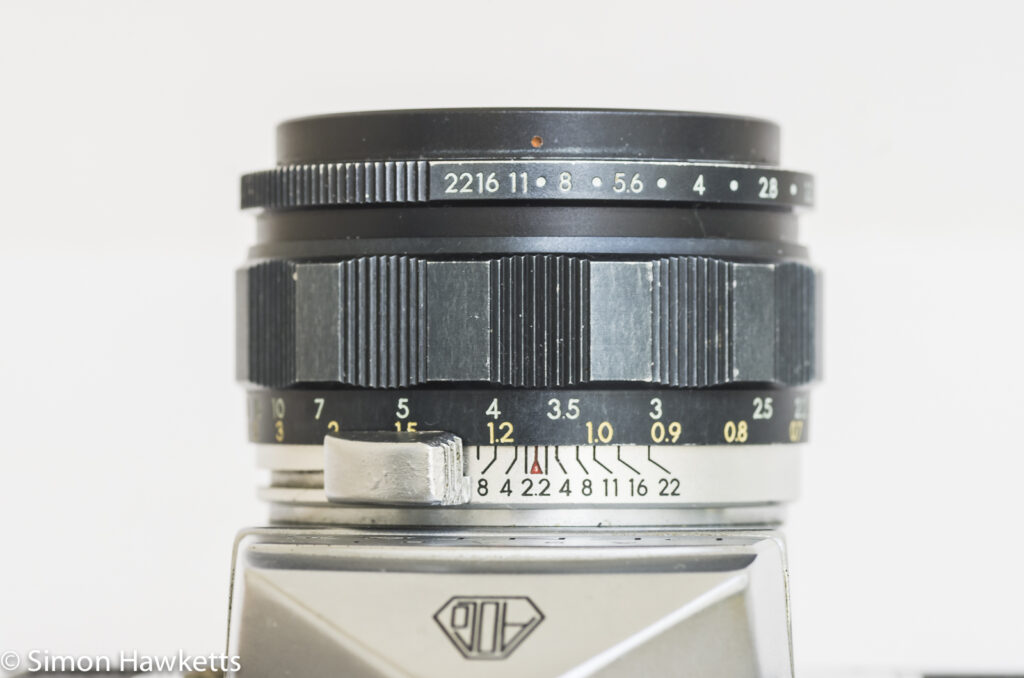
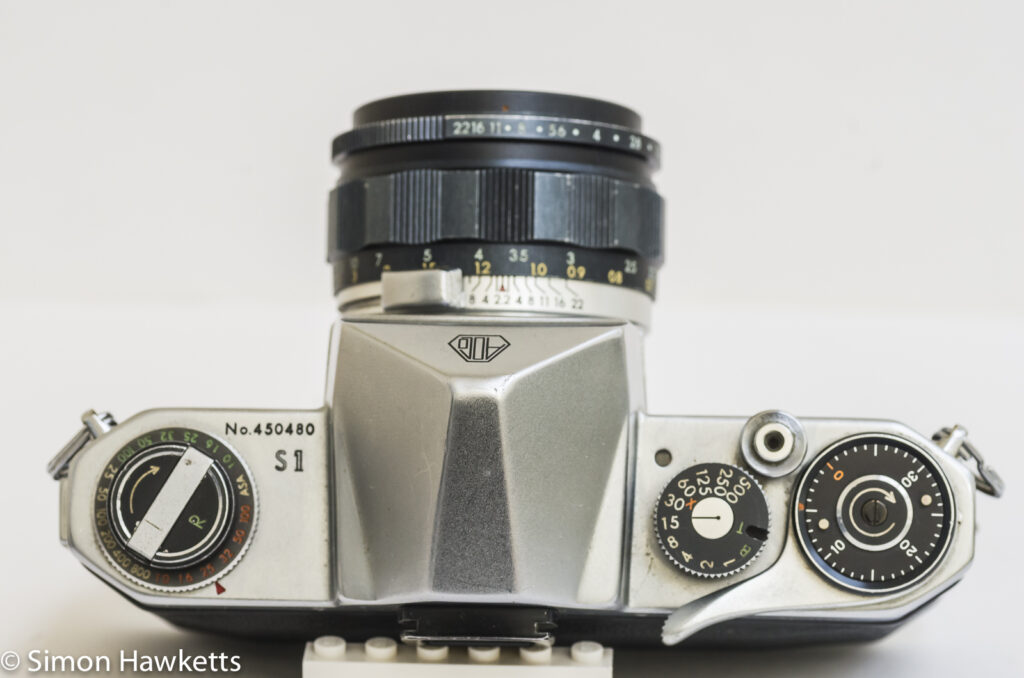
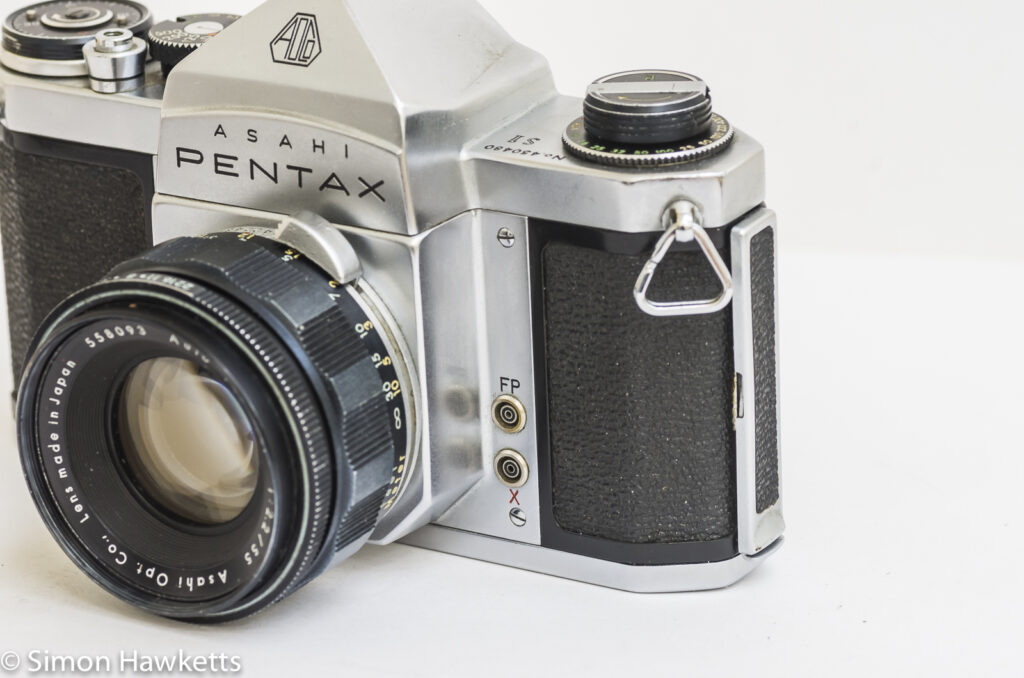
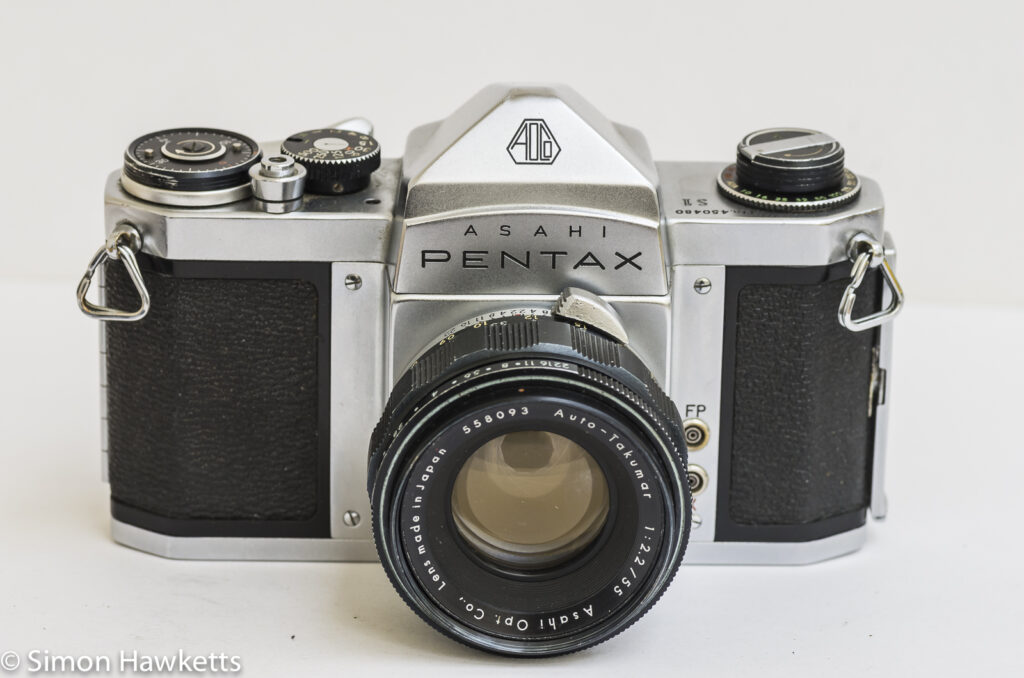
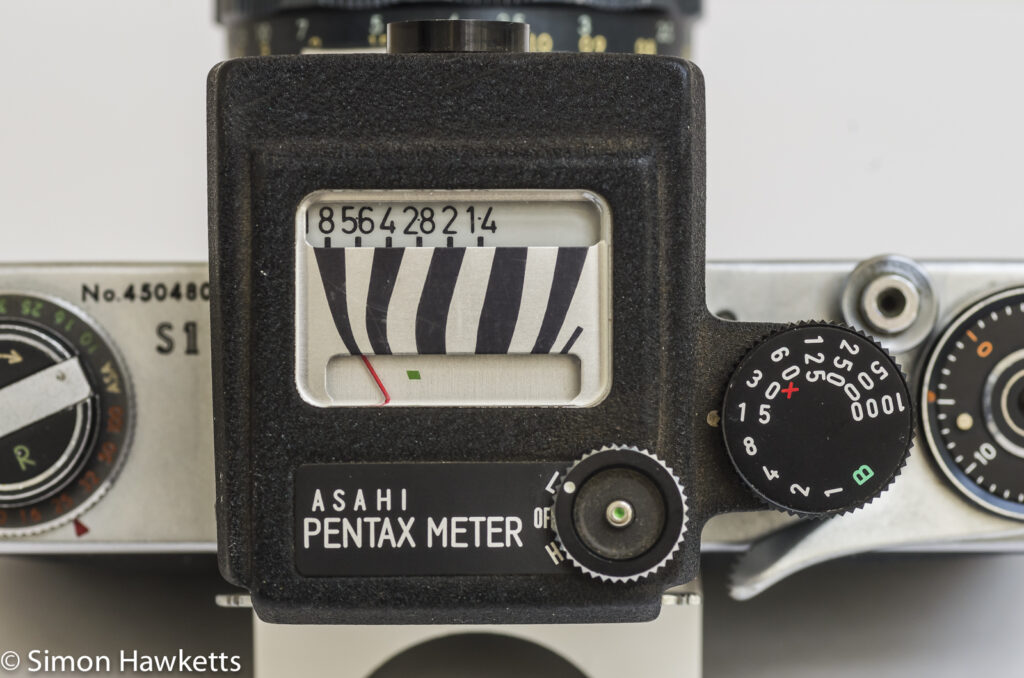
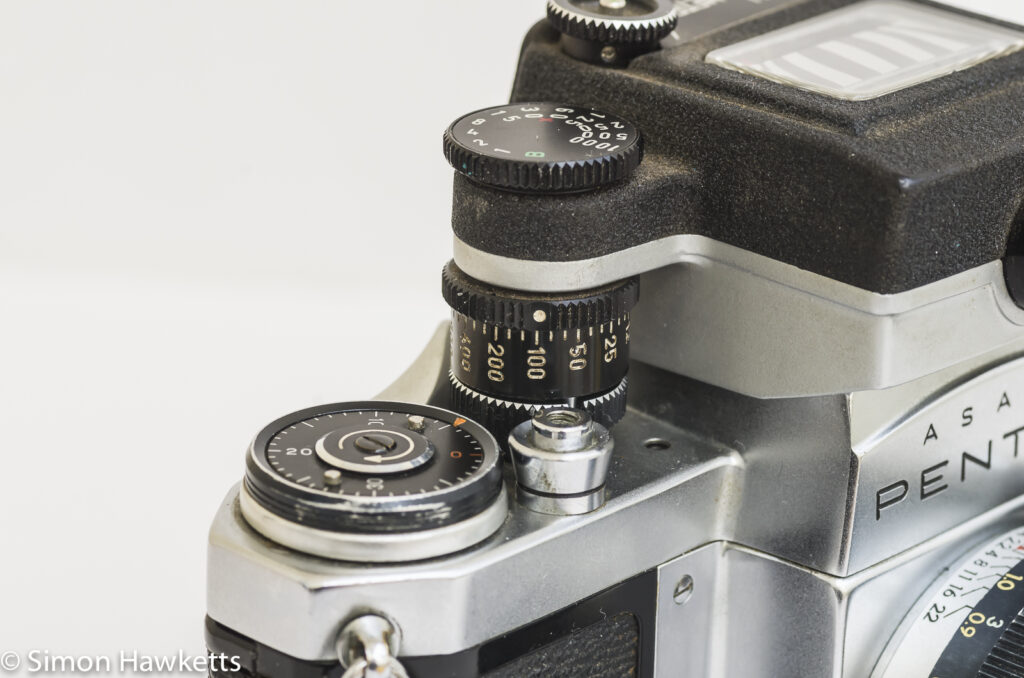
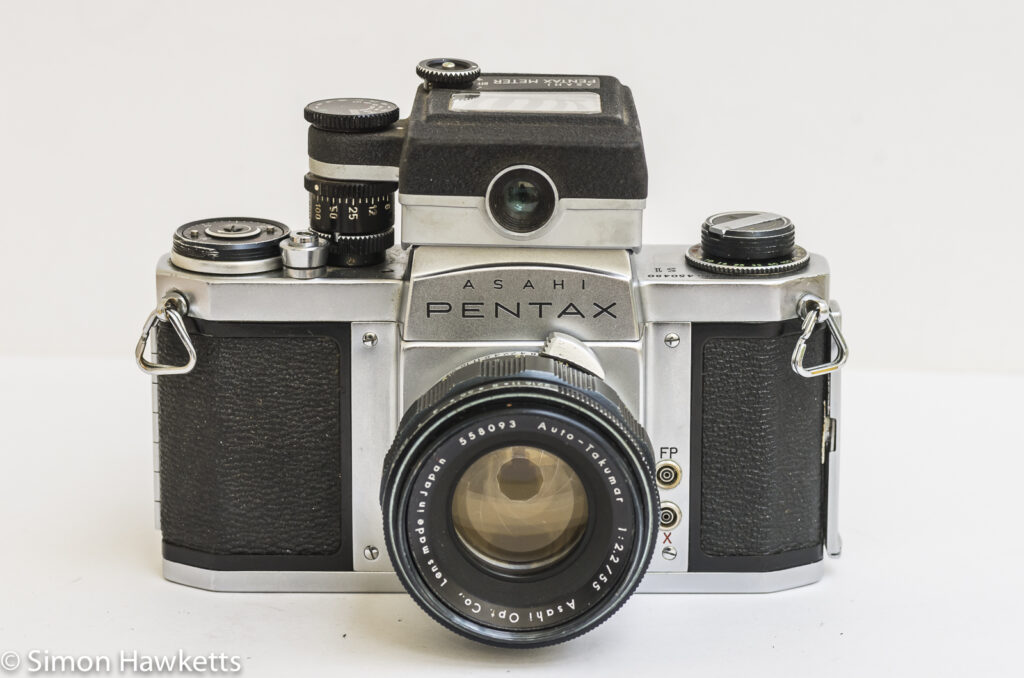
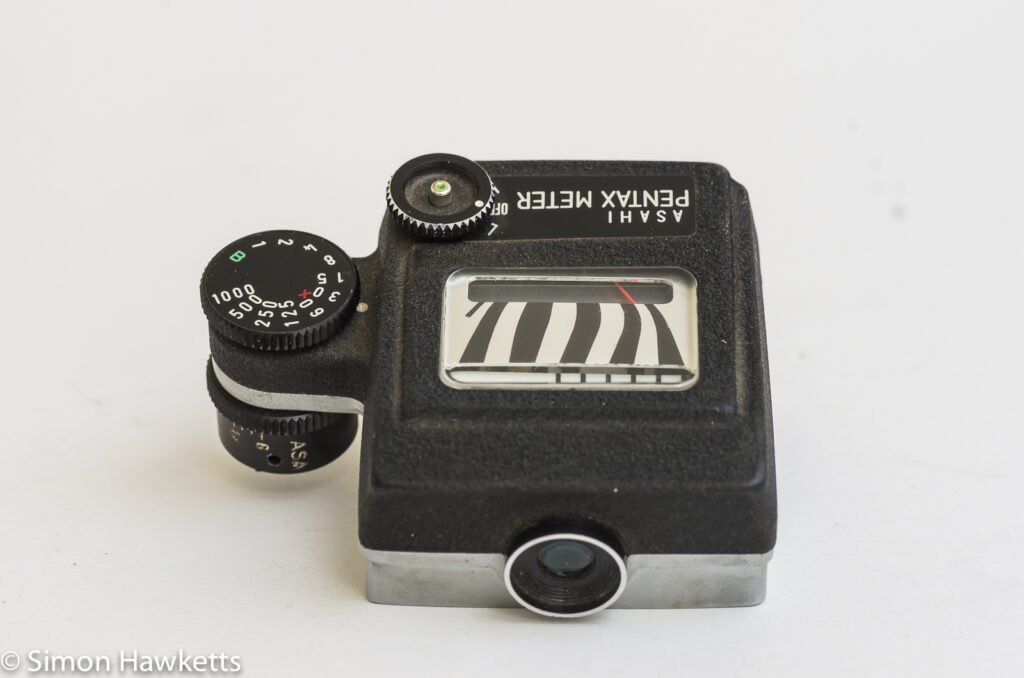
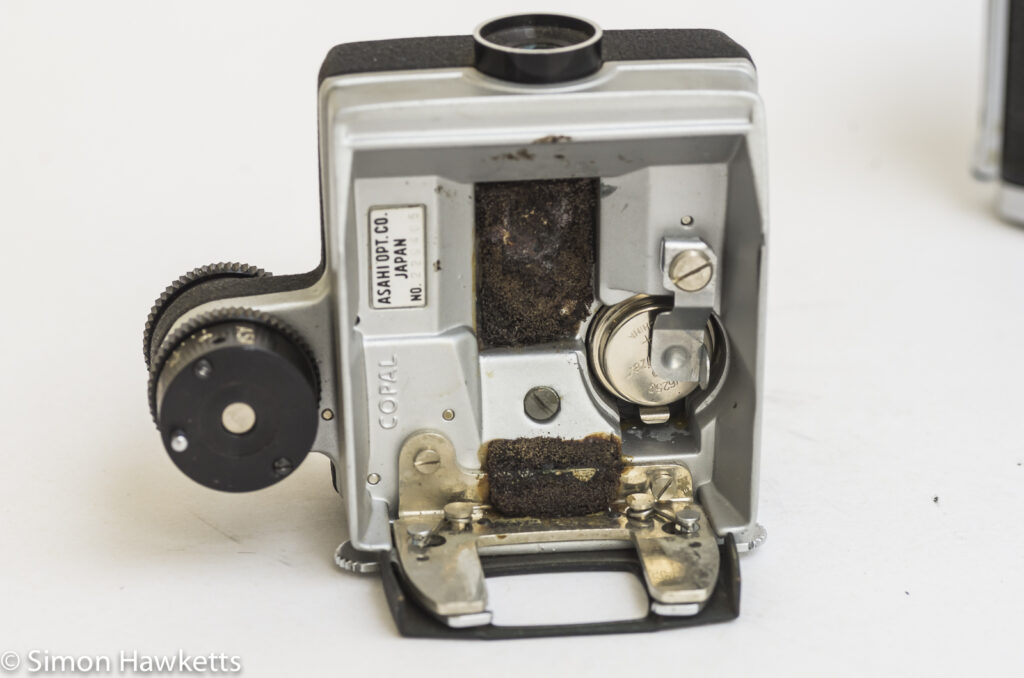
My Pentax S1 Camera.
I bought this camera for only a few pounds because the supplied lens, an Auto Takumar 55 mm f/2.2 M42 unit, which would be the authentic lens supplied with this camera when new, was not working. In fact the lens was one of the deciding factors in buying the camera because although I have several Takumar lenses, the ones I own are the more modern SMC Takumar or Super-Multi-Coated Takumar, so I wanted to add an Auto Takumar to my collection.
When I received the camera I gave it an inspection and found it to be in generally very good condition with only a slight scuffing on the top of the prism housing. Unusually, the body is not covered in dirt or grime, so I suspect that this model has possibly not had too much use. The shutter speeds all seem about right, and the shutter curtains are quite taut and straight, which is another area that old SLRs seem to suffer. The viewfinder is a little dirty and could do with a clean, and the mirror damper foam has deteriorated and will need to be replaced. In fact, the dirt in the viewfinder is almost certainly from the damper, but other than those few things, the camera body looks top-notch.
The lens, as the seller reported, did have a problem. I found that the aperture was stuck at f/2.2 and wouldn’t stop down using the aperture adjust ring. It did work if I set it and used the actuation arm at the back of the lens, so I could tell there was nothing wrong with the actual aperture blades, however. After a little dismantling I found there was a spring broken in the aperture system, so it needed a repair. Fortunately, I was able to do that, so the lens is now back to working order.
Just after I bought this camera I managed to acquire an original Pentax clip on light meter which was an optional extra to add light reading capabilities to the S1, S3 and SV series cameras. It’s better than a hand held light meter because it attaches to the camera and becomes a semi-coupled light meter. Because the S1 is one of the cameras this meter was made for, I’ve included it in my review.
Pentax S1 Description.
The Pentax S1 was made in about 1961 and is very similar in design to the Spotmatic series which followed a couple of years later. The control layout is virtually identical, and the weight and handling also feels much the same. The only real difference is the lack of the Spotmatic’s built-in light meter and the missing self-timer.
The S1 was actually the cut down version of the more comprehensively specified S3, and that is why the shutter speed was only spec’d up to 1/500 and the camera was fitted with the slower f/2.2 Auto Takumar standard lens.
The early versions of the S1 could not accept some of the later versions of the M42 Takumar 50 mm f/1.4 lens because the back of those lenses extended into the mirror box far enough that the mirror would actually crash into the back of the lens. The way to detect if there is a problem is by looking at the colour of the letter R on the rewind crank. My version has a green coloured R which indicates an early version, so I could have problems if I owned a copy of the 50 mm f/1.4 lens. Fortunately (or rather unfortunately since it is apparently a fine lens) I don’t have a copy, so it isn’t a problem for me, but for any owner the secret is in that letter R. To quote George Orwell “red R good, orange R bad”!
Optional Light meter
The Pentax light meter was an optional extra which users could purchase to add light reading capabilities to their Pentax S1, S3 or SV camera. It slides over a couple of grooves in the eyepiece, locks in place and sits neatly over the prism housing coupling directly with the shutter speed dial so as the control is adjusted it automatically sets the shutter speed. Since there is no coupling between the aperture and the light meter, that reading needs to be transferred to the lens aperture, so I’ve described the light meter as semi-coupled.
The first time I attached the meter to the camera I was surprised that I got the registration between the shutter dial and the meter’s control correctly aligned, so they clicked together, but when I looked in more detail I could see that it’s because of the design of the meter and camera. The shutter speed dial has a slot in it and the meter dial has a sprung loaded pin so no matter how they are aligned when you bring them together, a quick turn of the meter control and the two parts will lock together.
The film speed setting on the light meter is incorporated into the bottom of the shutter speed dial and just changes the position of the sprung loaded pin. This is a neat way of changing the shutter speed in relation to the film speed, and therefore corrects for faster/slower film.
In common with lots of meters made at the time, there are two scales available which represent two levels of sensitivity, L for low light use and H for high light use. These are selectable on the main on/off switch and move a different scale into view at the top of the meter.
To take a reading with the meter is very easy. It is turned on by selecting one of the scales, normally H in daylight and L in early morning or evening, and the camera pointed at the subject. Then the shutter speed dial is rotated to choose a shutter speed and the appropriate aperture is read from the above the band the meter needle is pointing at. This can be seen in one of the pictures above, where a shutter speed of 1/15sec and f/8 has been selected. The last part of setting the correct exposure is to transfer the f/8 setting to the aperture.
The meter’s condition is good, and the needle responds to light, but it does need a good clean up because the foam which is used to bed it against the prism housing is old and deteriorating. Hopefully, that won’t be too much of a job. I might also look at converting the meter to use a modern battery in place of the currently fitted mercury cell, which is no longer available.
Auto Takumar 55mm f/2.2 lens
The Auto Takumar lens supplied with the Pentax S1 is a bit different from the Super-Multi-Coated or SMC Takumar lenses found on the spotmatic and later series. There isn’t a fully automatic aperture, but there is a mechanism for allowing the focusing to be carried out at full aperture. At the back of the lens is a lever which is used to fully open the aperture so focusing can take place, and then a pin on the back of the lens stops it down to the correct aperture when the picture is taken.
The lens has a nice round aperture because it is made up of 10 blades (I know, I had to fit them all back in) so it should give well-rounded out of focus areas typical of lenses of this vintage. As can be seen in the pictures above, the front element has quite a pronounced yellow hue to it, so I wonder if it has the same radioactive element that the f/1.4 version had. It could be, of course, that it’s just the lens coating.
The aperture range of the lens is from the fastest f/2.2 up to f/22, and now it has been cleaned and re-lubricated it works nicely with a smooth action.
Pentax S1 Shutter
Although the Pentax S1 was a cut down version of the more highly spec’d S3 and had a shutter which only had settings up to 1/500th sec, in fact the actual shutter was not crippled in any way and still worked up to the full 1/1000 range that the S3 had. The only part missing is the inscription on the shutter speed dial and there is actually an unmarked click stop between the 1/500th setting and the T mark on the dial, which is where the 1/1000 setting is on the S3.
The consensus is that this was done because it was just too expensive to fit a modified shutter in the cut down version, but I have my own theory, which I thought of because I fitted the optional exposure meter to my example. If the camera didn’t have the additional stop, it would make the operation of the meter much more complex and could possibly require changes to provide a separate version to run with the S1.
So I suspect the S1 kept the additional setting because of the combination of the costs which would be necessary to modify the shutter and the optional exposure meter. Whatever the reason, it means the camera has that additional extra shutter speed setting – mind you, it’s likely that the setting has never been calibrated and so could be quite inaccurate.
Other features
This is a fairly basic and simple camera to use, and it doesn’t have many additional features. The viewfinder is a plain Fresnel screen with a central micro prism to aid focusing. There is a frame counter built into the film advance, but unlike the later models which self zeroed as the back door was opened, this version needs to be reset when a film is loaded.
My initial thoughts when I saw the camera were that it was very similar to the spotmatic series, but although that is undeniably true, it is actually a bit smaller. This is presumably because it doesn’t have the additional electronics associated with the spotmatic’s exposure meter or the self-timer. In operation however there are a load of similarities; the film advance control is the same, the speed setting knob is in the same place, the shutter release button is in the same position etc. etc. the list goes on and on.
I suppose these days it’s easy to look at the early Pentax models and say, ‘they look just like every other SLR of the time’, but I think the design of those early Pentax cameras actually influenced a lot of camera makers and that is probably why so many cameras looked the way they do and have the control layout they do.
Pentax S1 specifications
- Pentax S1 35mm slr camera
- M42 lens mount
- Auto Takumar 55mm f/2.2 lens
- Aperture range f/2.2 to f/22
- Shutter speed 1sec to 1/500 + B, T and hidden 1/1000
- User resettable frame counter
- X & FP flash sync socket
- Film type reminder round rewind crank
- Tripod mount in base
- Body Ser No: 450480
- Lens Ser No: 558093
- Manual for this camera
Clip On Pentax light meter Specifications
- Optional clip on meter for S1, S2, S3 & SV series cameras
- High and Low meter scales
- Single 625 mercury cell
- Film Speed setting 6 ASA to 1600 ASA
- Sprung loaded registration pin for shutter speed dial
- Eye piece attachment grip
- Battery check button
- Full shutter speed range of camera
- Made by Copal
- Ser No: 22048
- Manual for earlier version – much the same
Discover more from Everything Vintage
Subscribe to get the latest posts sent to your email.

